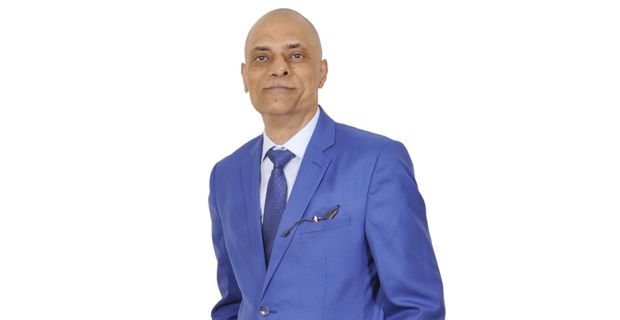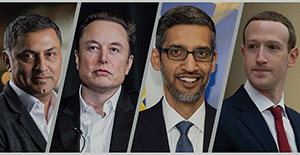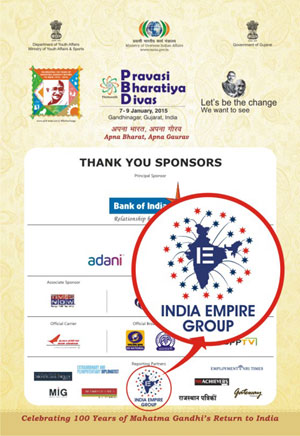Editor’s Desk
In the ever-evolving landscape of international diplomacy, India’s outreach is experiencing a quiet but transformative shift. Gone are the days when certain regions of the world—especially Latin America, the Caribbean, and parts of Africa—received only sporadic attention from New Delhi. Today, these regions are integral to India’s wider strategy of engaging with the Global South, and this issue of India Empire captures that awakening with renewed depth and energy.
We place a particular spotlight on Latin America, focusing on the powerful bilateral momentum between India and two of the continent’s largest democracies—Argentina and Brazil. In an exclusive and wide-ranging conversation with
India Empire, His Excellency Mariano Agustín Caucino, Ambassador of Argentina to India, described Prime Minister Narendra Modi’s landmark visit to Buenos Aires as “historic.” Coming nearly six decades after the last such engagement, the visit rekindled a 75-year-old friendship—now redefined as a strategic partnership.
The Ambassador noted that India’s global aspirations—clean energy, food security, and access to critical minerals—find a natural match in Argentina’s abundant resources. With Indian investments flowing into lithium-rich Catamarca and conversations around LNG supply advancing, a new chapter of mutual benefit has begun. “We are geographically distant, yes, but strategically aligned,” he remarked.
In a volatile world, Argentina’s stability, resource wealth, and non-alignment with global flashpoints give it a unique appeal. For India, which is ramping up energy needs and looking to secure critical inputs for manufacturing, Argentina is not just a partner—it could well be a cornerstone. Critical minerals like lithium will define the next phase of bilateral cooperation.
Beyond minerals and trade, the Indo-Argentine relationship is deepening through space and defence cooperation. From Himalayan training for Argentine troops to Indian forces climbing the Andes, this is a defence diplomacy that is as symbolic as it is strategic. Plans are also underway for collaboration in startups and tech—highlighting how India’s innovation story is being taken global, one handshake at a time.
If Argentina represents the strategic, Brazil represents the symbolic. Prime Minister Modi’s recent visit to Brazil was rich in culture, diplomacy, and vision. From receiving Brazil’s highest civilian honour—the Grand Collar of the National Order of the Southern Cross—to strategic discussions with President Lula da Silva on trade, climate, and defence, the visit marked a high point in India-Brazil relations. The fusion of Samba with Shiv Tandav, Amazonian chants with Indian ragas, turned diplomacy into cultural symphony.
In Rio and Brasília, the Indian diaspora showed up in force—transforming Modi’s outreach into a celebration of India’s soft power. As the Prime Minister aptly put it: “India-Brazil ties must be as vibrant as Carnival, as passionate as football.”
Further north, in the Caribbean, this issue also features the Prime Minister’s deeply emotional and triumphant visit to Trinidad and Tobago. With nearly half the population tracing their roots to India, the visit was more than ceremonial—it was spiritual. Whether addressing Parliament or receiving the country’s highest honour, Modi connected with the Indo-Trinidadian soul. His poetic lines—“Dal Puri met Doubles,” “Tabla met Steelpan”—captured the cultural fusion with elegant simplicity.
Importantly, India is now extending diaspora privileges to sixth-generation persons of Indian origin, and deploying digital public infrastructure tools like UPI in the Caribbean. This is not just nostalgia—it is strategic diplomacy cloaked in cultural kinship.
Nowhere was this cultural diplomacy more evident than in neighbouring Guyana, where the Indian High Commission and the Swami Vivekananda Cultural Centre in Georgetown recently hosted a spirited Srimad Bhagavad Gita chanting competition. Organised in collaboration with the Chinmaya Mission, the event saw active participation from temples and socio-cultural organisations across the region. “It was heartening to witness young children and youth chanting shlokas from Chapter 5 of the Bhagavad Gita,” noted the High Commission on X, underscoring the depth of cultural connection between Guyana and Bharat. Such moments not only reflect a shared heritage but also a common aspiration—to preserve and reinforce our people-to-people ties in meaningful and enduring ways.
Elsewhere, in Windhoek, Namibia, and across Southeast Asia, India’s global vision continues to unfold. In Cambodia, for instance, the ASI-led restoration of temples like Ta Prohm reaffirms civilisational links and India’s role as a heritage partner in Asia.
What binds all these efforts together is a coherent, values-driven vision: India as a responsible, confident, and compassionate actor in world affairs. Whether in lithium-rich Latin America, heritage-rich Southeast Asia, or the diasporic heartlands of the Caribbean, India’s engagements are strategic, sincere, and sustained.
As this edition highlights, India’s foreign policy is no longer limited to traditional allies or transactional ties. It is culturally rooted, globally relevant, and people-first in spirit. And as always, it is our privilege at India Empire to chronicle these milestones.
We hope you find this issue as illuminating to read as it was rewarding for us to compile.
Sayantan Chakravarty
sayantanc@gmail.com











Comments.